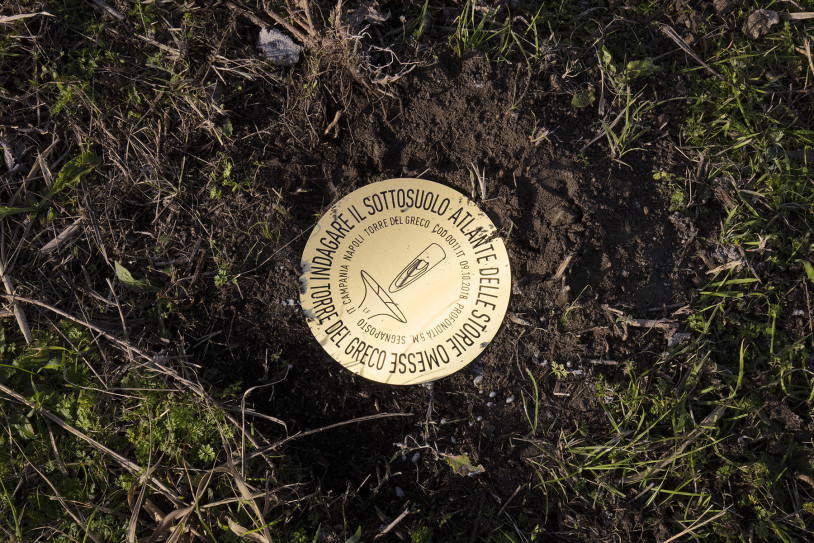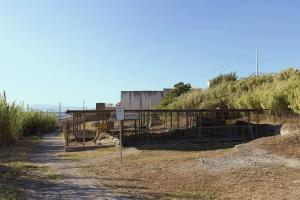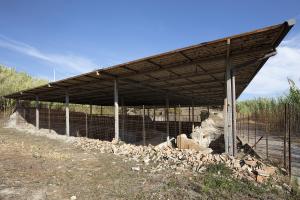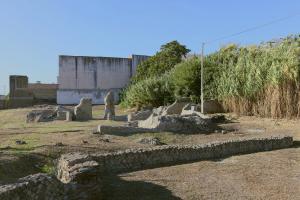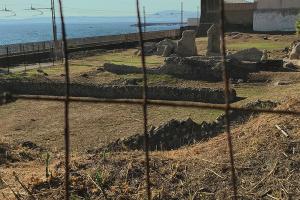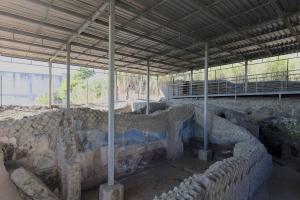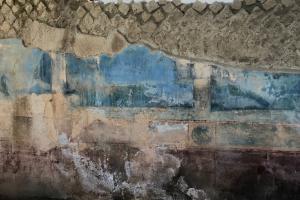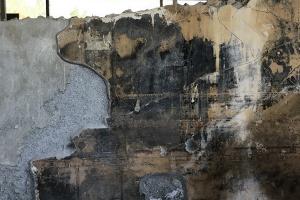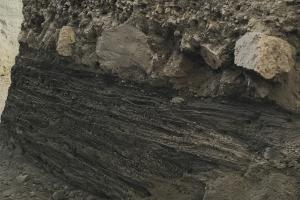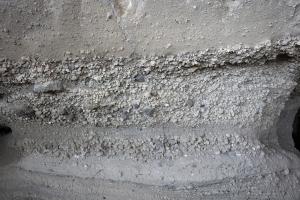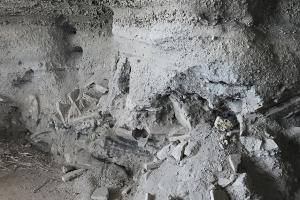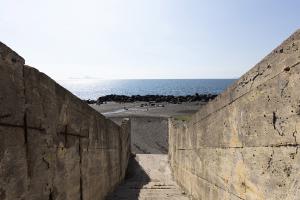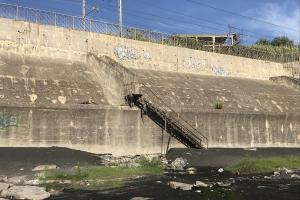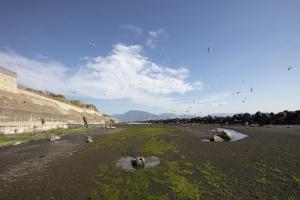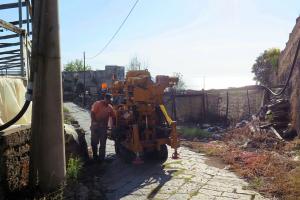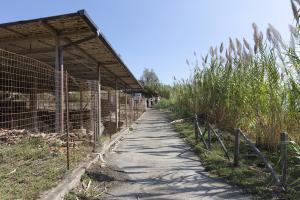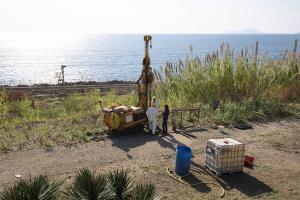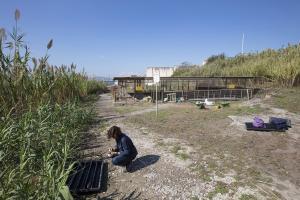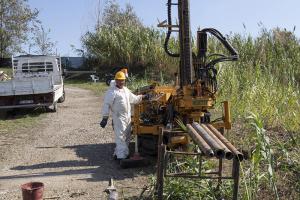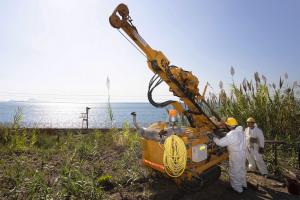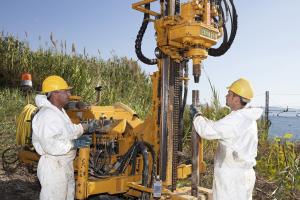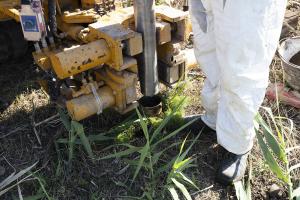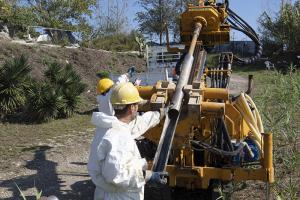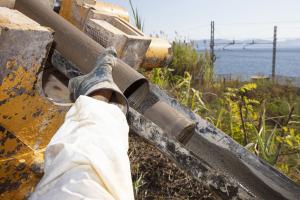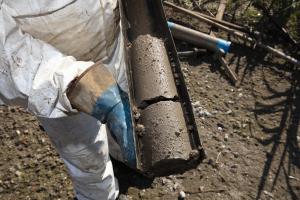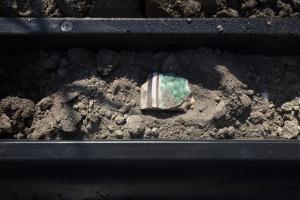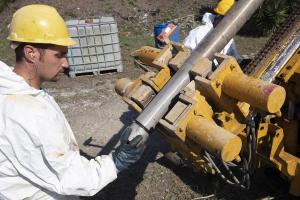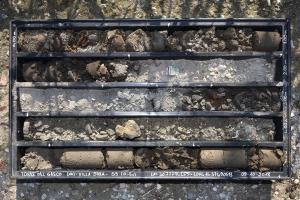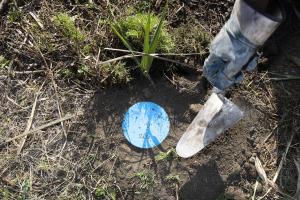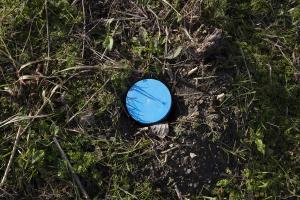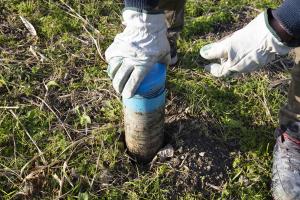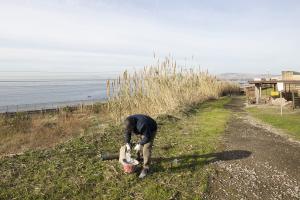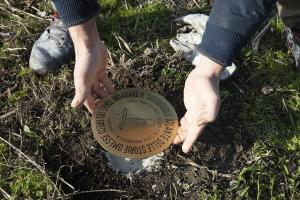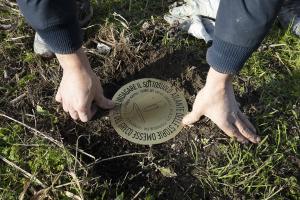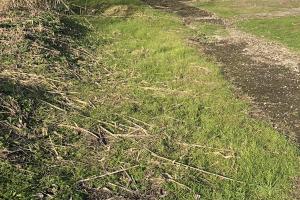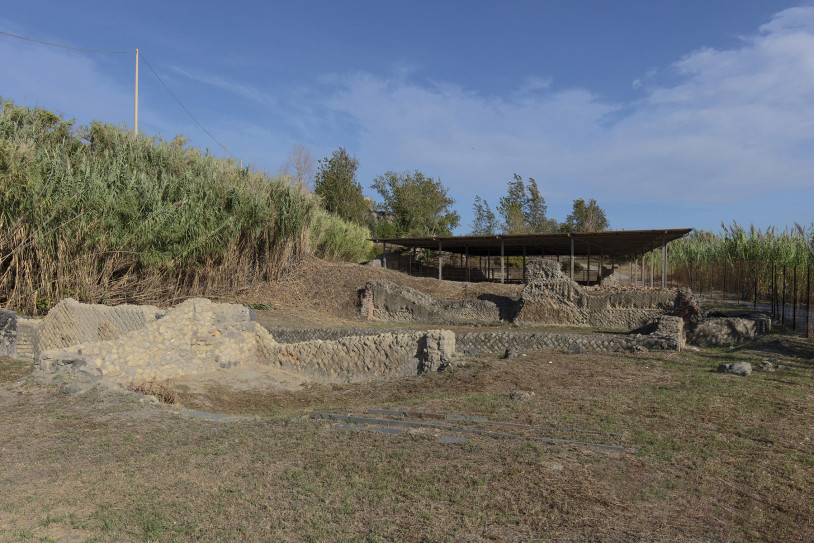
Among the ruins of illegally built houses behind the municipal cemetery, hidden among the sheds of the greenhouses used for growing flowers, and beyond the railway underpass that leads to the sea along the coastal line of Torre del Greco, stand the remains of the once majestic suburban complex of Villa Sora, with its terraces going down towards the sea, and its gardens, baths and nymphaea. Villa Sora, in the neighbourhood to which it gives its name, was a spectacular complex. Its frescoes and marble intarsias are so sophisticated that it is considered to have been an imperial residence. Dating from between the first century BC and the first century AD, when the coastline of the Gulf of Naples, with its Graeco-Roman buildings, was an oasis of splendour and luxury, the Villa originally covered a large area, rising up on three levels, of which only the intermediate one can now be visited, for the rest was destroyed by the eruptions of Vesuvius in 79 AD and in 1805. The discovery of the ancient remains was made in the seventeenth century, when some truly superb artefacts were found. These included a marble relief with Orpheus, Hermes, and Eurydice, now in the Museo Archeologico Nazionale di Napoli, and a statue of a Satyr pouring, now in the Museo Archeologico Regionale Antonio Salinas di Palermo. Finds and expropriations from the site continued during the Bourbon period, and through to the nineteenth century, when the Villa was damaged by the construction of the railway line, which follows the coast and goes through it. The awkward presence of the railway caused no little harm, in the form of structural damage, detachments, and lifting of the paint of the frescoes, due to the proximity of the sea and to the shockwaves produced by passing trains. By 1974, the Gruppo Archeologico was already in charge of the site, and in 1989 came the first regular excavation. This, however, was not enough to make the complex safe and stop its deterioration and neglect, which has continued to the present day, despite all the measures put in place. In 2004, Villa Sora was full of garbage, for it was used as an illegal tip, but the following year it was cleaned up and cleared of weeds, and the old fence was expanded and replaced to ensure greater protection of all the buildings in the complex. The Villa is in a quite remarkable area, behind the municipal cemetery, and to reach it one needs to go through private property that has clearly been the target of illegal building for many decades. As well as the now abandoned huts, it is surprising to see the number of greenhouses used for cultivating carnations, which are some of the most vigorous in Campania, and which are exported throughout Italy. The flowers grow white, but they are often painted red to satisfy the demand of the markets, and to reach Sanremo, which is home to Italy’s most famous song festival. Despite all the illegal constructions, its past as a garbage tip, its position between the railway and the cemetery, and the difficulty in reaching it along the abandoned road that winds its way through the carnations and greenhouses, the site is now the focus of special studies. These accompany a field campaign for the recovery of disjecta membra – scattered fragments – so that Torre del Greco can once again claim its precious classical past.
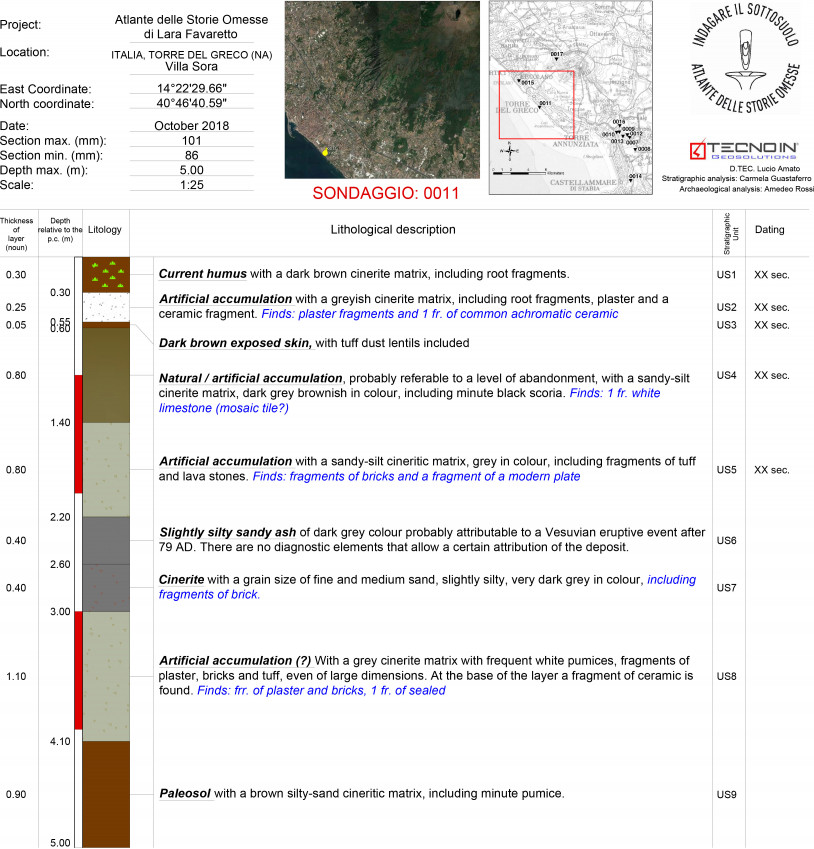
The Villa Sora was probably part of a huge residential complex overlooking the sea, and still today it is located on the coastline of Torre del Greco, separated from the sea by the railway line and by the sandy deposits of today’s beach. The coastline near the Villa Sora is characterised by the presence of a cliff, the pyroclastic products of which were entirely shaped by the flow of the eruption in AD 79. In some areas, there are volcaniclastites from more recent times.
The Roman constructions of the Villa Sora, buried by the products of the eruption in AD 79, rest on a sequence of pyroclastic deposits from previous eruptions, separated by erosion surfaces.
The remains of the villa were damaged in 1842 by the construction of the railway line for Torre Annunziata. It was explored for the first time under the Bourbons in 1741-2 and, later, in 1797-8. In 1828 the ruins were mapped by Bonucci. New samples were taken by the Soprintendenza Archeologica di Pompei between 1989 and 1992. bringing to light a number of important residential premises frescoed in the Third and Fourth Styles.
The complex was probably built on a number of levels sloping down towards the sea. Some superimposed floors and walls built up against earlier painted walls clearly show the presence of different phases, while the ceramic materials found on site, fragments of frescoes in the Second Style, and Late Republican floors, suggest it was built in the second quarter of the first century BC.
The investigations that have been carried out over the decades in the area of the Villa Sora complex have recovered important finds from its furnishings. In as early as 1796, excavations were undertaken after persistent reports on finds made by illegal digs in the area of the villa. In 1797 the marble statue of a pouring satyr and a bronze statue of Hercules and the Ceryneian Hind were found, now in the museum of Palermo, together with frescoes with theatrical subjects also from the villa. According to Lucia Scatozza’s reconstruction, the Villa Sora also contained the famous marble relief with Hermes, Orpheus and Eurydice, a replica from the Augustan age of an original made by the circle of Phidias, now in the National Archaeological Museum in Naples.
It is likely that, some decades after the villa was buried by the eruption in 79 AD, people returned to live in this area. Excavations in the upper levels of the Villa Sora have brought to light a necropolis with cappuccina and amphora tombs dating from the fifth and sixth centuries AD. From the late second or early third century AD there is also a marble altar that mentions a small wood sacred to Jupiter. This was found on the site of the villa and reused in later constructions, which can be dated by ceramic finds to the fourth century AD. These clearly attest to the reoccupation of the area.
The 0011 core sampling site went down to 5 m below ground level to the east of the villa complex, visible and covered by a metal roof in an area up against the arcade excavated during the Bourbon age and shown on the map by Tommaso Sarto.
The core drilling probably affected an area that had already been excavated, which meant that layers with modern materials were found down to -2.6 m below ground level. Also the layers below revealed disturbance (accumulations and stratigraphy slips) down to 4.1 m below ground level.
From -4.1 to -5 m a paleosol was found but unfortunately it had no elements that could help with dating it.
